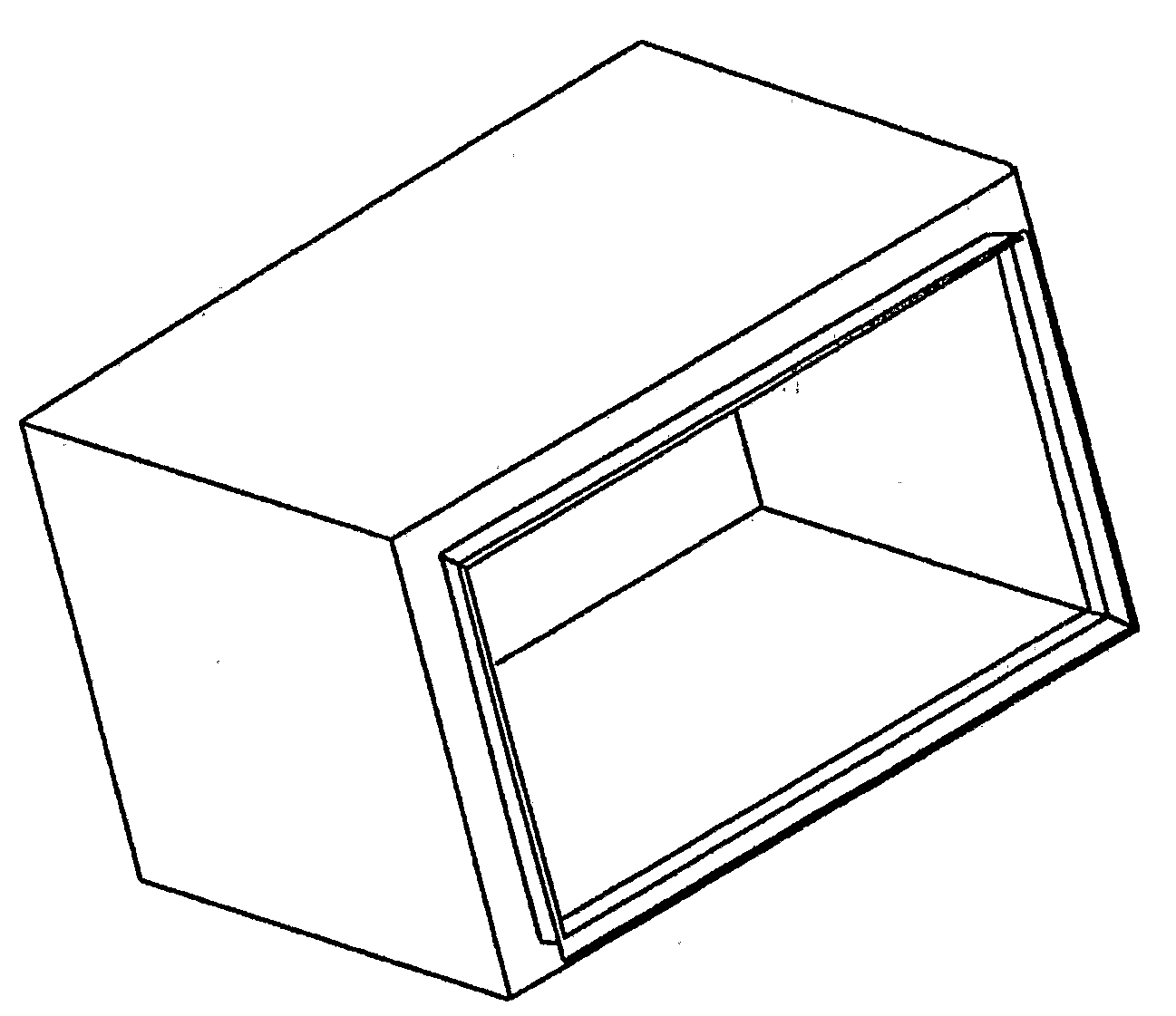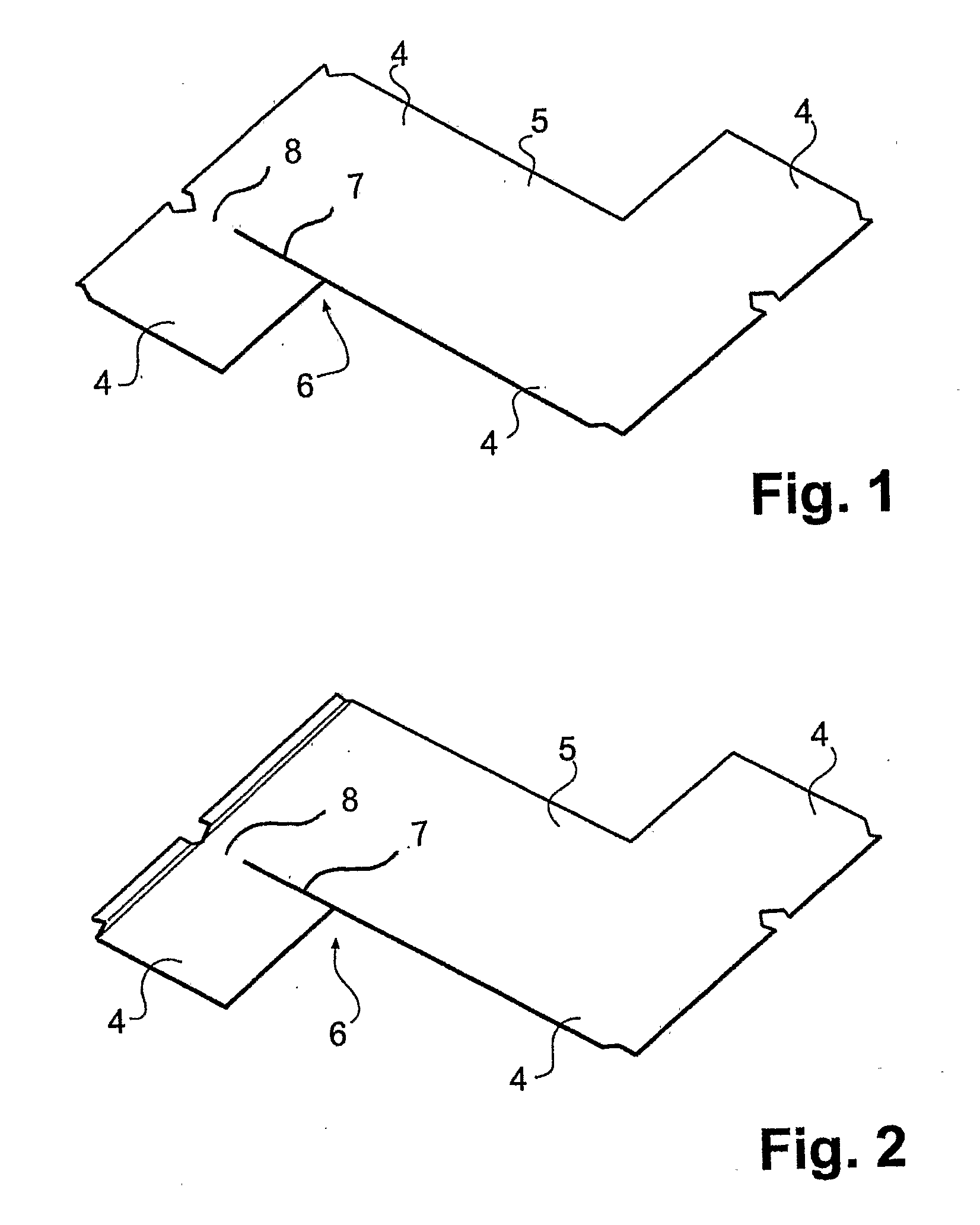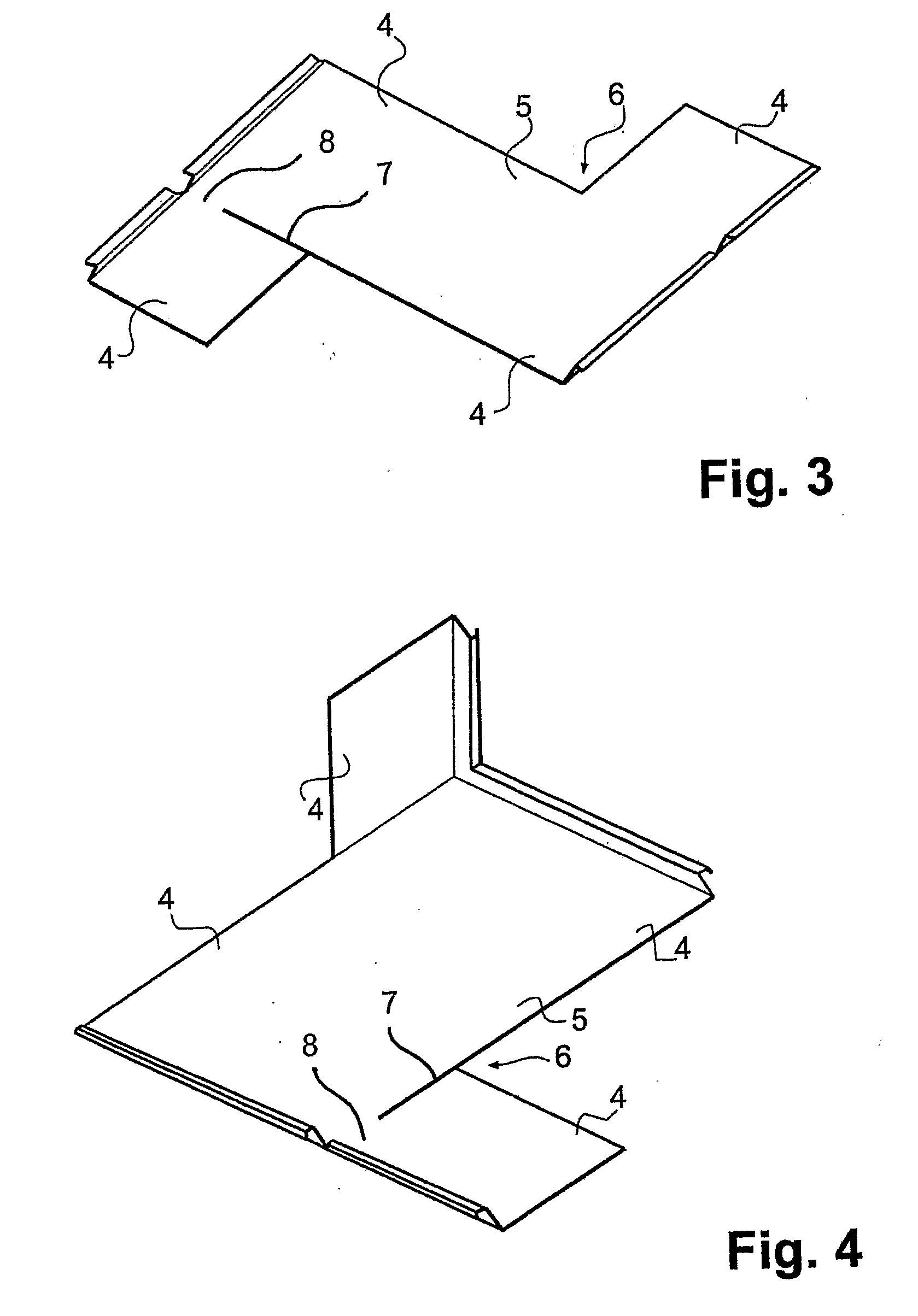Method for manufacturing enclosures of a sheet material and an enclosure of a sheet material
- Summary
- Abstract
- Description
- Claims
- Application Information
AI Technical Summary
Benefits of technology
Problems solved by technology
Method used
Image
Examples
Embodiment Construction
[0033]An enclosure will be manufactured of a sheet blank so that the sides 4 and the base 5 of the enclosure will be folded and the seams will be fastened, the corner 6 to be folded of one enclosure being cut open 7 for a part of the range in the sheet blank. The manufacturing steps will next be explained in more detail by means of the enclosed figures.
[0034]The sheet blank is cut to the desired shape, in this example to the S-shape. After this, the product blanks will be taken to the folding machine. The folding machine has a blade setting according to the FIG. 13 using three different folding tools 1, 2 and 3 made to it. In this example, a separate forming tool 1 is used for folding the orifice; long folds will be made with the first folding tool 2, and the folding of the open-cut corner will be made with the second folding tool 3. When using these folding tools, the folding sequence is the following: Folding the two first edges of the orifice with the forming tool 1, FIG. 2, afte...
PUM
| Property | Measurement | Unit |
|---|---|---|
| Length | aaaaa | aaaaa |
| Size | aaaaa | aaaaa |
Abstract
Description
Claims
Application Information
 Login to View More
Login to View More - R&D
- Intellectual Property
- Life Sciences
- Materials
- Tech Scout
- Unparalleled Data Quality
- Higher Quality Content
- 60% Fewer Hallucinations
Browse by: Latest US Patents, China's latest patents, Technical Efficacy Thesaurus, Application Domain, Technology Topic, Popular Technical Reports.
© 2025 PatSnap. All rights reserved.Legal|Privacy policy|Modern Slavery Act Transparency Statement|Sitemap|About US| Contact US: help@patsnap.com



